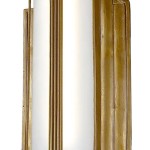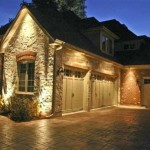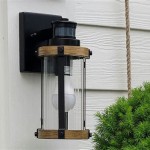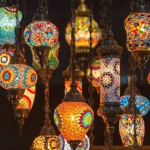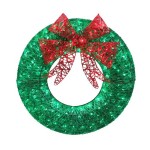Outdoor Light Up Stars: A Guide to Decorative Illumination
Outdoor light up stars have become increasingly popular as decorative elements for homes and businesses, offering a versatile and aesthetically pleasing way to enhance exterior spaces. These illuminated stars range in size, material, and lighting technology, allowing for diverse applications from holiday decorations to year-round architectural accents. Understanding the various types and considerations involved in selecting and installing outdoor light up stars is crucial for achieving the desired visual impact and ensuring long-term durability.
Materials and Construction
The durability and longevity of an outdoor light up star primarily depend on the materials used in its construction. Several options are available, each with distinct advantages and disadvantages regarding weather resistance, maintenance requirements, and overall lifespan. Common materials found in outdoor light up star construction include:
Metal: Metal frames, typically constructed from steel or aluminum, provide structural support and weather resistance. Steel offers superior strength but is susceptible to rust if not properly coated. Aluminum is lighter and naturally corrosion-resistant, making it a preferred choice for coastal environments. Metal frames can be powder-coated or painted to further enhance their resistance to the elements and to provide a desired aesthetic finish.
Plastic: Plastic, particularly durable polymers like polyethylene or polypropylene, is often used for the star's outer shell or housing. Plastic offers excellent weather resistance, is lightweight, and can be molded into various shapes and designs. UV-resistant plastics are crucial for preventing degradation and discoloration caused by prolonged exposure to sunlight. The transparency of plastic allows for efficient light diffusion, creating a uniform glow.
Glass: While less common due to its fragility, glass can be incorporated into outdoor light up stars, particularly for decorative elements or as a covering for internal light sources. Tempered glass provides increased resistance to breakage, but care must still be taken to prevent damage from impacts or extreme temperature fluctuations. The clarity of glass allows for brilliant light transmission, making it suitable for highlighting specific features.
Fabric: Some light up stars employ fabrics, typically treated with weather-resistant coatings, to create a soft and diffused light effect. These fabric stars are often lightweight and easy to store, but they may be more susceptible to tearing or damage from wind and rain. The fabric's color and texture significantly impact the overall appearance of the star, allowing for a wide range of design possibilities.
Lighting Technologies
The illumination source is a critical component of an outdoor light up star, influencing brightness, energy efficiency, and lifespan. Different lighting technologies offer varying characteristics, each suited to specific applications and aesthetic preferences. Common lighting options include:
Incandescent Bulbs: While historically prevalent, incandescent bulbs are increasingly less common due to their low energy efficiency and short lifespan. They produce a warm, yellowish light but consume significantly more power than alternative technologies. The heat generated by incandescent bulbs can also pose a safety concern, particularly in enclosed spaces.
LEDs (Light Emitting Diodes): LEDs are the most popular choice for outdoor light up stars due to their high energy efficiency, long lifespan, and versatility. LEDs consume significantly less power than incandescent bulbs and can last for tens of thousands of hours. They are available in a wide range of colors and brightness levels, allowing for customizable lighting effects. LED technology also allows for dynamic lighting control, enabling features such as dimming and color changing.
Halogen Bulbs: Halogen bulbs offer a brighter light output than incandescent bulbs and have a longer lifespan. However, they still consume more power than LEDs and generate more heat. Halogen bulbs are often used in applications where a high level of illumination is required, but their energy inefficiency makes them less desirable for widespread use.
Fiber Optics: Fiber optic lighting utilizes thin strands of glass or plastic to transmit light from a central source to the star's surface. This technology allows for precise control over light distribution and can create unique lighting effects. Fiber optic systems are often used in conjunction with LED light sources to provide a combination of energy efficiency and visual appeal.
Installation and Placement Considerations
Proper installation and placement are essential for maximizing the aesthetic impact and ensuring the safety and longevity of outdoor light up stars. Several factors should be considered when planning the installation, including:
Location: The location of the light up star significantly influences its visibility and impact. Consider the surrounding environment and architecture when choosing a placement. Highlighting architectural features, such as gables or entryways, can enhance the overall visual appeal. Avoid placing stars in locations where they could obstruct walkways or create a safety hazard.
Weatherproofing: Ensure that the light up star is specifically designed and rated for outdoor use. Check the IP (Ingress Protection) rating to determine its resistance to water and dust. Wiring and connections should be properly sealed to prevent water damage and electrical hazards. Consider the prevailing weather conditions in your area and select a star made from materials that can withstand extreme temperatures, wind, and precipitation.
Power Source: Determine the power source for the light up star and ensure that it is readily accessible and appropriately rated for outdoor use. Options include standard electrical outlets, low-voltage transformers, and solar panels. For hardwired installations, it is recommended to consult a qualified electrician to ensure compliance with local electrical codes. Solar-powered stars offer a convenient and energy-efficient solution, but their performance depends on the amount of sunlight they receive.
Mounting Hardware: Select appropriate mounting hardware based on the star's size and weight and the surface to which it will be attached. Ensure that the hardware is made from durable, weather-resistant materials. For hanging stars, use sturdy chains or cables that can withstand wind and other environmental factors. Secure the star firmly to prevent it from falling or being damaged by the elements.
Maintenance: Regular maintenance is essential for preserving the appearance and functionality of outdoor light up stars. Clean the star's surface periodically to remove dirt, dust, and debris. Inspect wiring and connections for signs of damage or corrosion. Replace bulbs or LEDs as needed. During periods of inclement weather, consider removing or securing the star to prevent damage from high winds or heavy snow.
Size and Proportion: The size of the light up star should be proportionate to the surrounding environment. A small star might be overwhelmed by a large building, while an overly large star could appear disproportionate. Consider the scale of the building or landscape and choose a star that complements the overall aesthetic.
Color Temperature: The color temperature of the light emitted by the star can significantly impact the ambiance and mood of the space. Warm white light (around 2700-3000 Kelvin) creates a cozy and inviting atmosphere, while cool white light (around 4000-5000 Kelvin) provides a brighter and more modern look. Choose a color temperature that complements the surrounding décor and desired aesthetic.
Light Output and Distribution: Consider the desired level of brightness and the way the light is distributed by the star. Some stars emit a focused beam of light, while others provide a more diffused glow. Choose a star that provides the appropriate level of illumination for the intended purpose. Avoid using stars that are excessively bright, as they can create light pollution and disturb neighbors.
Applications and Design Considerations
Outdoor light up stars offer a wide range of applications, extending beyond holiday decorations to encompass architectural lighting and landscape design. The versatility of these illuminated elements allows for creative expression and customization to suit various styles and preferences. Consider these applications and design elements:
Holiday Decorations: Light up stars are a popular choice for holiday decorations, particularly during Christmas and Hanukkah. They can be hung from trees, rooftops, or porches, adding a festive touch to the exterior of homes and businesses. Stars can be adorned with multiple colors or white lights for a classic look.
Architectural Accents: Integrating light up stars into architectural designs can enhance the aesthetic appeal of buildings, highlighting specific features and creating a unique visual identity. Stars can be used to illuminate entryways, gables, or balconies, adding depth and dimension to the facade.
Landscape Lighting: Light up stars can be incorporated into landscape designs to provide ambient lighting and create a magical atmosphere. They can be hung from trees, placed among shrubs, or used to illuminate pathways, enhancing the beauty of gardens and outdoor spaces.
Commercial Displays: Businesses can use light up stars to attract attention, promote events, or create a welcoming atmosphere for customers. Stars can be incorporated into window displays, storefront signage, or outdoor seating areas, enhancing the brand image and creating a memorable experience. Consider stars with the company logo, or the colors of the brand.
Themed Events: Light up stars can be used to create themed environments for parties, weddings, or other special events. Stars can be incorporated into decorations to create a festive and memorable atmosphere, enhancing the overall experience for guests.
Custom Designs: Select stars that accommodate custom designs, allowing for personal expression and creativity. Consider creating stars with specific patterns, colors, or monograms, adding a unique touch to the décor. Custom designs can be tailored to match the overall style of the home, building, or event.
Dynamic Lighting: Certain light up stars offer dynamic lighting capabilities, allowing for a wide range of lighting effects beyond simple illumination. These effects include color changing, dimming, and various animation patterns. Dynamic lighting can be used to create a vibrant and engaging experience, adding a touch of visual interest to the outdoor space.

Outdoor Star Lights Yard Envy

Moravian Star Lights

Outdoor Led Star Light Trio Decorations Lights Decorating With Diy

Outdoor Lights

22 5 H 17 And 12 Sullivans Lighted Outdoor Stars Set Of 3 White Com

Diy Plastic Hanger Star With Lights Yard Decor Outdoor Decorations
Displays That Shimmer Decorating With Star Lights

Light Up Santa Stars Led Outdoor Decoration Stake Solar Pathway Garden

Vidaxl Decoration Stars 3 Pcs Silver Mesh Led Outdoor Indoor Co

Lights4fun Twinkly Smart Led Outdoor Acrylic Stars



